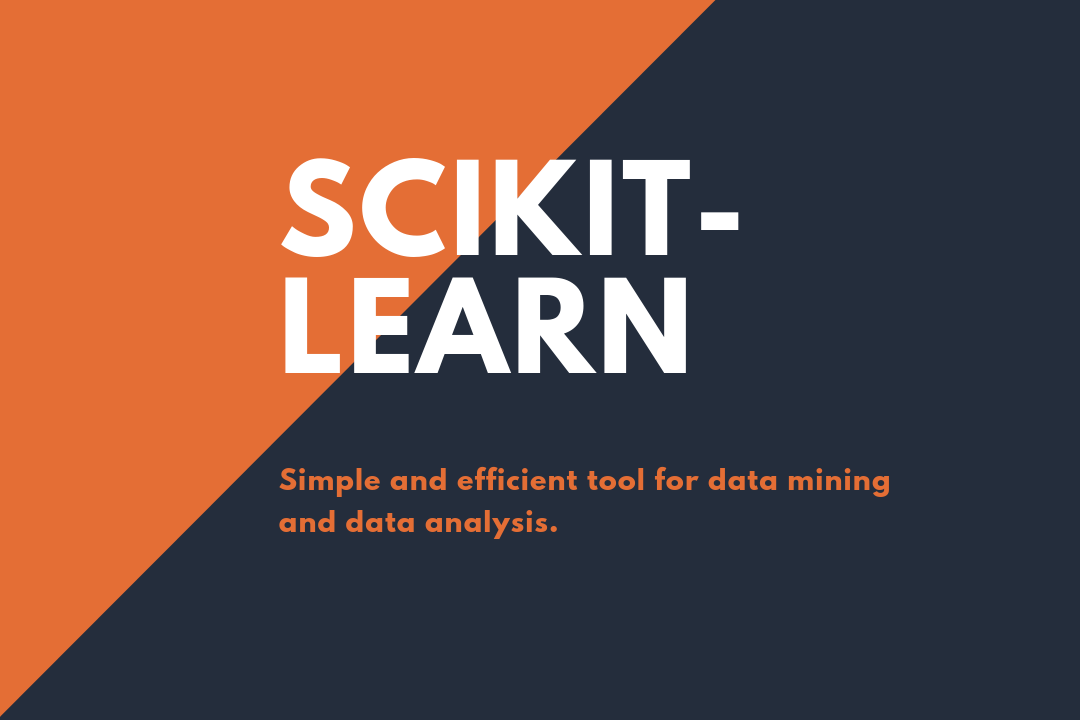Introduction In the rapidly evolving world of data science and machine learning, having the right tools is essential for building effective models an
Introduction
In the rapidly evolving world of data science and machine learning, having the right tools is essential for building effective models and analyzing complex datasets. Scikit-learn, commonly referred to as Scikit, is one of the most popular Python libraries for machine learning. It provides an extensive set of tools for classification, regression, clustering, and data preprocessing, making it an indispensable resource for both beginners and experienced data scientists.
For anyone looking to learn Scikit, this article offers a complete guide to its features, applications, and practical steps to get started.
What is Scikit?
Scikit-learn is an open-source Python library designed for machine learning tasks. It offers simple, efficient, and reusable tools for predictive data analysis. Scikit is built on top of other Python libraries like NumPy, SciPy, and matplotlib, ensuring seamless integration with Python’s data ecosystem.
Key Features of Scikit
- Easy-to-use API for beginners and professionals
- Tools for data preprocessing, feature selection, and dimensionality reduction
- Wide range of algorithms for supervised and unsupervised learning
- Integration with Python’s scientific stack
- Extensive documentation and active community support
Learning Scikit provides a strong foundation for implementing machine learning solutions efficiently.
Why You Should Learn Scikit
Learning Scikit is crucial for several reasons:
1. Beginner-Friendly
Scikit’s consistent and intuitive API makes it accessible to those who are new to machine learning. Functions follow a simple pattern: fit(), predict(), and score(), making it easy to build and evaluate models.
2. Versatile
Scikit supports a wide range of machine learning tasks:
- Classification: Predicting categories such as spam detection or image recognition
- Regression: Predicting continuous values like house prices or stock trends
- Clustering: Grouping data points, useful in customer segmentation or anomaly detection
- Dimensionality Reduction: Reducing data complexity while retaining important features
3. Integration with Python Ecosystem
Scikit seamlessly works with other Python libraries such as pandas for data manipulation, NumPy for numerical operations, and matplotlib or seaborn for visualization.
4. Open Source and Well-Maintained
Being open source, Scikit is continuously updated with improvements, new algorithms, and documentation. Its active community ensures support for learners and developers.
Getting Started: How to Learn Scikit
1. Prerequisites
Before diving into Scikit, it is essential to have a basic understanding of:
- Python programming
- NumPy and pandas for data handling
- Basic statistics concepts like mean, variance, and correlation
Having these foundational skills will make learning Scikit smoother.
2. Installing Scikit
To install Scikit-learn, use pip:
pip install scikit-learn
Or, if you are using Anaconda:
conda install scikit-learn
Once installed, you can import it in Python as:
import sklearn
Core Components of Scikit
1. Data Preprocessing
Data preprocessing is crucial to improve model performance. Scikit offers tools for:
- Standardization and Normalization: Scaling features for consistency
- Handling Missing Values: Imputation of missing data
- Encoding Categorical Variables: Transforming categories into numerical values
Example:
from sklearn.preprocessing import StandardScaler
scaler = StandardScaler()
scaled_data = scaler.fit_transform(data)
2. Supervised Learning
Supervised learning involves training a model on labeled data. Scikit provides multiple algorithms:
- Linear Regression for predicting numerical values
- Logistic Regression for binary classification
- Decision Trees and Random Forests for complex classification and regression tasks
- Support Vector Machines (SVM) for high-dimensional data classification
Example:
from sklearn.linear_model import LogisticRegression
model = LogisticRegression()
model.fit(X_train, y_train)
predictions = model.predict(X_test)
3. Unsupervised Learning
Unsupervised learning deals with unlabeled data. Scikit includes:
- K-Means Clustering for grouping data points
- Hierarchical Clustering for nested group structures
- Principal Component Analysis (PCA) for dimensionality reduction
Example:
from sklearn.cluster import KMeans
kmeans = KMeans(n_clusters=3)
kmeans.fit(data)
clusters = kmeans.predict(data)
4. Model Evaluation
Scikit provides tools to evaluate model performance:
- Accuracy, Precision, Recall, F1-score for classification
- Mean Squared Error (MSE) and R² for regression
- Cross-validation for robust performance measurement
Example:
from sklearn.metrics import accuracy_score
accuracy = accuracy_score(y_test, predictions)
5. Model Selection
Scikit also supports:
- Train-Test Split: Dividing data for training and testing
- Grid Search: Finding optimal hyperparameters for models
Example:
from sklearn.model_selection import GridSearchCV
grid = GridSearchCV(model, param_grid, cv=5)
grid.fit(X_train, y_train)
Practical Tips to Learn Scikit Effectively
1. Start with Small Datasets
Begin with smaller, clean datasets to understand the workflow of training, predicting, and evaluating models. Popular datasets include Iris, Titanic, and Digits.
2. Follow Step-by-Step Tutorials
Hands-on tutorials provide practical experience. Websites like Kaggle, Scikit-learn documentation, and YouTube tutorials are excellent resources.
3. Practice Regularly
Regular coding practice helps reinforce concepts. Try solving real-world problems such as sentiment analysis, sales prediction, or image classification.
4. Explore Advanced Features
Once comfortable, explore advanced features like pipeline creation, feature selection, and ensemble methods.
5. Join the Community
Engage with Scikit’s open-source community through forums, GitHub, and Stack Overflow to learn best practices and get support.
Applications of Scikit in Real Life

1. Finance
Scikit is widely used for stock price prediction, credit scoring, and fraud detection.
2. Healthcare
Applications include disease prediction, patient risk scoring, and image-based diagnostics.
3. Marketing
Customer segmentation, churn prediction, and recommendation systems leverage Scikit’s tools.
4. Technology
From natural language processing to image recognition, Scikit is applied in AI and tech innovations.
5. Education
Scikit is often used in teaching machine learning due to its simplicity and well-documented examples.
Conclusion
Learning Scikit is a vital step for anyone looking to excel in machine learning and data science. Its simplicity, extensive functionality, and integration with the Python ecosystem make it an ideal tool for beginners and professionals alike.
By mastering Scikit, you can preprocess data, implement supervised and unsupervised models, evaluate performance, and solve real-world problems efficiently. With continuous practice, exploration of advanced features, and engagement with the community, anyone can leverage Scikit to build powerful machine learning solutions and unlock the potential of data-driven decision-making.


COMMENTS